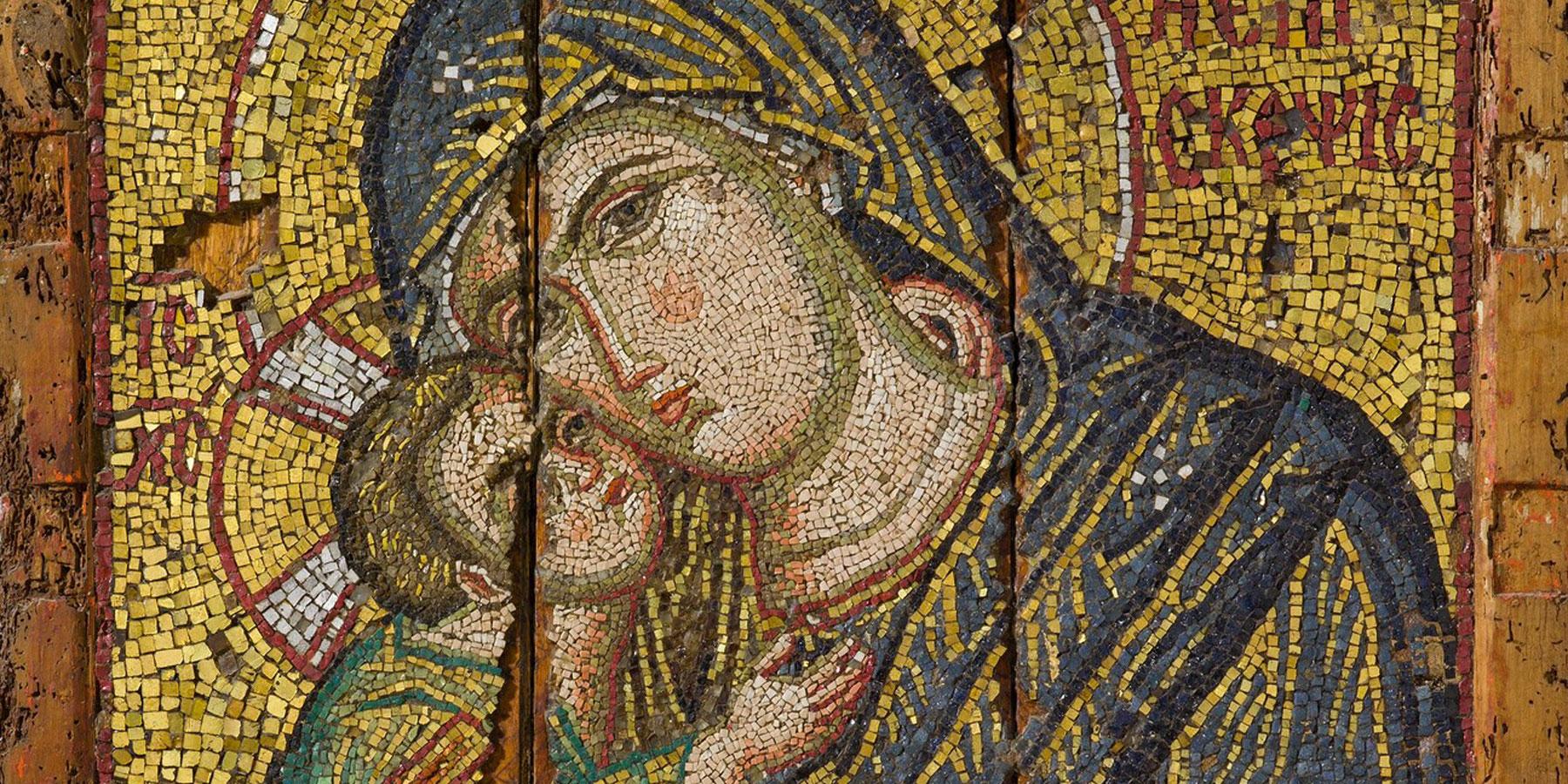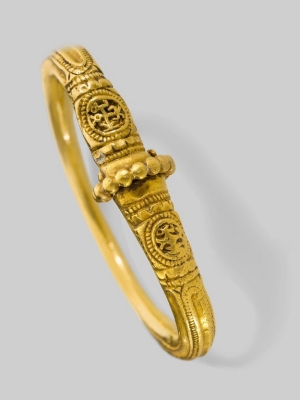The Krategos-Mytilene Treasure was found accidentally in 1951, during construction of the airport on the island of Lesbos near the coast of Asia Minor (now Turkey). The hoard consisted of 17 silver vessels, 22 pieces of gold jewelry, and 32 coins all minted in Constantinople under early seventh-century emperors. Control stamps guaranteeing the purity of the silver show that the hoard was buried sometime after 630, possibly by Greeks fleeing the turmoil caused by Persian invasions but with hopes of returning to reclaim their prized possessions.
Crosses on some objects show that the owners were Christians. They nonetheless enjoyed pagan subjects, such as those on the silver bowl decorated with a nude figure of Aphrodite, the goddess born of the sea, above a large head that likely represents the sea god Poseidon or Oceanus. Such bowls were used as serving ladles and probably also in bathing, as they are often decorated with marine themes.
Some of the jewelry was magical in purpose. Popular since antiquity, amulets continued to be used among Christians despite the objections of the church. The tubular type of amulet usually contained thin gold or silver sheets, carefully folded, bearing spells or Gospel passages that were intended to bring good fortune and guard against calamities.







